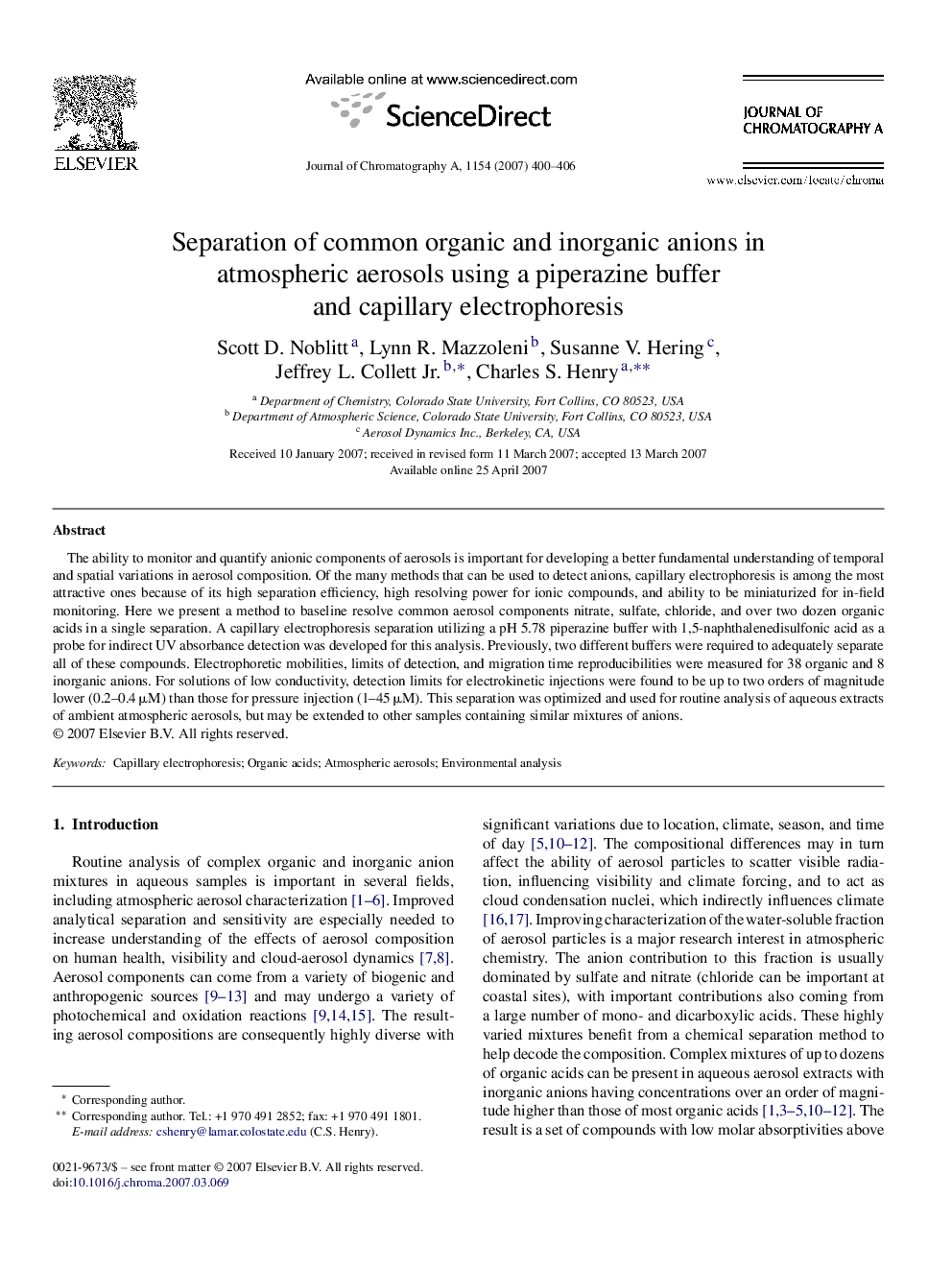| Article ID | Journal | Published Year | Pages | File Type |
|---|---|---|---|---|
| 1208560 | Journal of Chromatography A | 2007 | 7 Pages |
The ability to monitor and quantify anionic components of aerosols is important for developing a better fundamental understanding of temporal and spatial variations in aerosol composition. Of the many methods that can be used to detect anions, capillary electrophoresis is among the most attractive ones because of its high separation efficiency, high resolving power for ionic compounds, and ability to be miniaturized for in-field monitoring. Here we present a method to baseline resolve common aerosol components nitrate, sulfate, chloride, and over two dozen organic acids in a single separation. A capillary electrophoresis separation utilizing a pH 5.78 piperazine buffer with 1,5-naphthalenedisulfonic acid as a probe for indirect UV absorbance detection was developed for this analysis. Previously, two different buffers were required to adequately separate all of these compounds. Electrophoretic mobilities, limits of detection, and migration time reproducibilities were measured for 38 organic and 8 inorganic anions. For solutions of low conductivity, detection limits for electrokinetic injections were found to be up to two orders of magnitude lower (0.2–0.4 μM) than those for pressure injection (1–45 μM). This separation was optimized and used for routine analysis of aqueous extracts of ambient atmospheric aerosols, but may be extended to other samples containing similar mixtures of anions.
